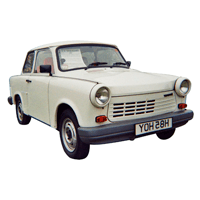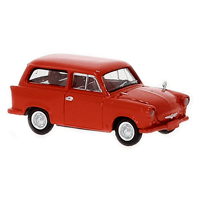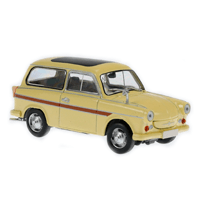
Catalog / Trabant
Trabant: The People's Car of East Germany and Its Legacy
Trabant, affectionately known as the 'Trabi,' is an iconic automobile that played a significant role in the history of East Germany (German Democratic Republic or GDR). The Trabant story began in 1957 when the first model, the Trabant P50, rolled off the production line in Zwickau, Saxony. The name 'Trabant,' meaning 'satellite' or 'companion' in German, was chosen to reflect the Soviet Union's space achievements of the time.
The Trabant was designed to be an affordable, practical car for the masses. Its most famous model, the Trabant 601, was introduced in 1963 and became the symbol of East German automotive engineering. The car's body was made of Duroplast, a plastic material reinforced with cotton or wool fibers, which was both lightweight and durable. This innovative use of materials was partly due to the scarcity of steel in the GDR.
Despite its simple design and modest performance, the Trabant gained a cult following. It was one of the few cars available to East German citizens, and waiting times for a new Trabant could stretch up to 15 years. The car's reliability and ease of repair made it a practical choice for many families.
An interesting fact about the Trabant is that it played a symbolic role in the fall of the Berlin Wall. When East Germany opened its borders in 1989, thousands of Trabants crossed into West Germany, creating iconic images of the reunification era.
The Trabant's production continued until 1991, shortly after German reunification. During its 34-year production run, more than 3 million Trabants were manufactured. The last model to be produced was the Trabant 1.1, which featured a more modern four-stroke engine sourced from Volkswagen.
Today, the Trabant has become a collector's item and a symbol of ostalgie (nostalgia for aspects of life in East Germany). Classic car enthusiasts and history buffs alike appreciate the Trabant for its historical significance and unique design. While no longer in production, the legacy of the Trabant lives on, representing an important chapter in automotive and European history.




